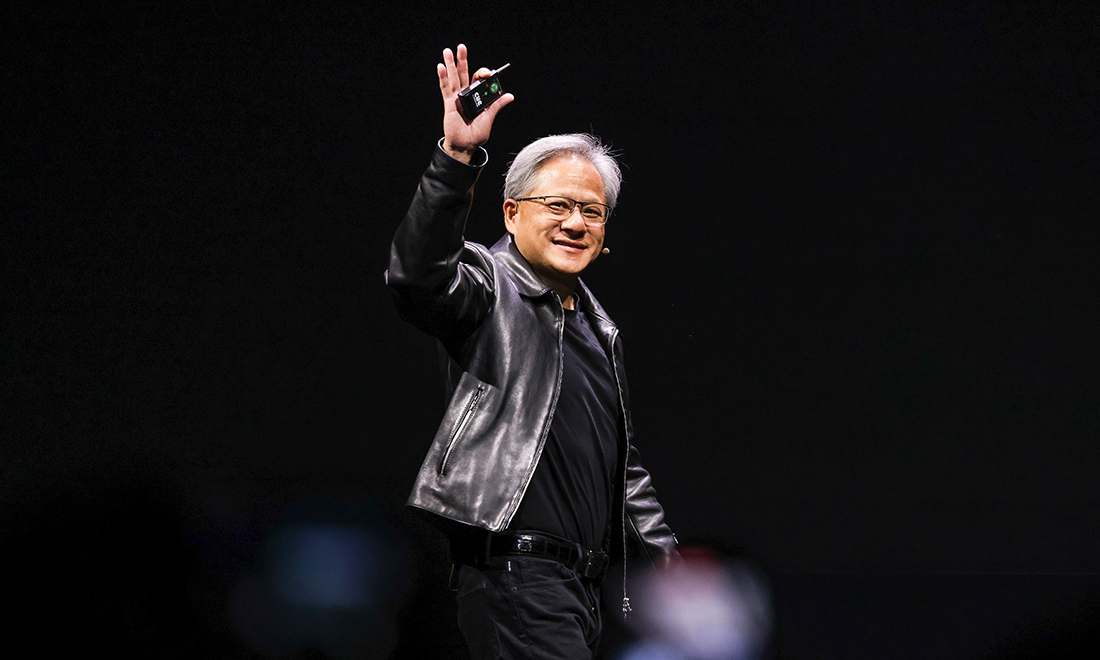
做空者通過做空美國股市中被大多數(shù)投資者忽視的一個板塊——小盤股而大賺一筆。
據(jù)S3 Partners LLC基于市場平均空頭頭寸估算,,今年以來,,通過押注小盤股、微型股和超微型股價格下跌,,做空者已經(jīng)獲得了近130億美元的賬面利潤,。與此形成鮮明對比的是,做空中盤股,、超大盤股和大盤股造成了約1,400億美元的損失,,這些股票在今年的大部分時間里都在上漲,,原因是經(jīng)濟形勢不受悲觀預(yù)測的影響,美聯(lián)儲(Federal Reserve)的加息周期已經(jīng)臨近尾聲,,而且人工智能領(lǐng)域的重大突破引發(fā)了科技股的暴漲。
由于英偉達公司(Nvidia Corp.),、Meta Platforms Inc.和特斯拉(Tesla Inc.)等公司推動了股市的大部分漲幅,,這一差異凸顯了股市中出現(xiàn)的鴻溝。衡量小型公司的指標(biāo)羅素2000指數(shù)(Russell 2000)里超過一半的成份股今年下跌,,使該指數(shù)的漲幅僅為5%,,遠低于標(biāo)準(zhǔn)普爾500指數(shù)(S&P 500)16%的漲幅。
盈透證券(Interactive Brokers)的首席策略師史蒂夫·索斯尼克說:“今年的表現(xiàn)在很大程度上與人工智能熱潮有關(guān),,大型科技股漲幅過大,。目前,今年還是做空者獲利較多,?!?/p>
從6月到7月,小盤股也加入了股市的反彈行列,。但在最近的回調(diào)中,,它們受到的打擊最大,根據(jù)S3的數(shù)據(jù),,自8月以來,,做空者估計獲利約97億美元。
據(jù)美國銀行(Bank of America Corp.)的策略師援引EPFR Global公司的數(shù)據(jù)稱,,由于小盤股遭受重創(chuàng),,上周投資者從專注于該板塊的基金中撤資15億美元,為近三個月來最多的一次,。相比之下,,美國大盤股基金吸引了55億美元的資金。
美國銀行財富管理公司(U.S. Bank Wealth Management)的高級投資策略師羅布·霍沃斯稱,,表現(xiàn)不佳的一大原因是,,由于投資者高度關(guān)注特定行業(yè),行業(yè)權(quán)重抑制了投資者的興趣,。該基金幾乎沒有投資今年市場表現(xiàn)最好的科技板塊,,金融和能源板塊的權(quán)重較高(這兩類板塊屬于表現(xiàn)最差的板塊)。小公司受經(jīng)濟放緩和貨幣政策收緊的影響最為嚴(yán)重,。
霍沃斯說:“由于信貸環(huán)境收緊和貸款標(biāo)準(zhǔn)收緊,,小公司往往首當(dāng)其沖。這在某種程度上造就了給小盤股帶來很大壓力的環(huán)境,?!?/p>
摩根士丹利(Morgan Stanley)的邁克·威爾遜一直在預(yù)測股市會下跌,他也同樣警告投資者遠離小盤股,因為這類股票的利潤率更容易受到通貨膨脹的侵蝕,。
S3的數(shù)據(jù)顯示,,做空小盤股的交易在所有做空交易中所占比例不到10%。一些策略師預(yù)測,,小盤股還有反彈的空間,。例如,美國銀行的吉爾·凱里·霍爾就曾經(jīng)表示,,如果經(jīng)濟持續(xù)增長,,那些已經(jīng)將衰退風(fēng)險定價的細(xì)分市場最有可能跑贏大盤。
然而,,做空者仍然在不斷涌入,。根據(jù)S3的數(shù)據(jù),在過去30天里,,做空者已經(jīng)投入6.58億美元做空小盤股,,較上月有所增加。S3的數(shù)據(jù)顯示,,在過去一個月中,,做空者對Archer Aviation Inc.公司、美國航空運輸服務(wù)集團(Air Transport Services Group Inc.),、Alteryx Inc.公司和Sage Therapeutics Inc.公司的押注最多,。
今年迄今為止,最賺錢的小盤股做空交易是押注遭受重創(chuàng)的地區(qū)性銀行,。據(jù)S3稱,,做空者對Lumen Technologies Inc.公司、Foot Locker Inc.公司和Beam Therapeutics Inc.公司的押注也獲得了回報,。(財富中文網(wǎng))
譯者:中慧言-王芳
做空者通過做空美國股市中被大多數(shù)投資者忽視的一個板塊——小盤股而大賺一筆,。
據(jù)S3 Partners LLC基于市場平均空頭頭寸估算,今年以來,,通過押注小盤股,、微型股和超微型股價格下跌,,做空者已經(jīng)獲得了近130億美元的賬面利潤,。與此形成鮮明對比的是,,做空中盤股、超大盤股和大盤股造成了約1,400億美元的損失,,這些股票在今年的大部分時間里都在上漲,,原因是經(jīng)濟形勢不受悲觀預(yù)測的影響,美聯(lián)儲(Federal Reserve)的加息周期已經(jīng)臨近尾聲,,而且人工智能領(lǐng)域的重大突破引發(fā)了科技股的暴漲,。
由于英偉達公司(Nvidia Corp.),、Meta Platforms Inc.和特斯拉(Tesla Inc.)等公司推動了股市的大部分漲幅,這一差異凸顯了股市中出現(xiàn)的鴻溝,。衡量小型公司的指標(biāo)羅素2000指數(shù)(Russell 2000)里超過一半的成份股今年下跌,,使該指數(shù)的漲幅僅為5%,遠低于標(biāo)準(zhǔn)普爾500指數(shù)(S&P 500)16%的漲幅,。
盈透證券(Interactive Brokers)的首席策略師史蒂夫·索斯尼克說:“今年的表現(xiàn)在很大程度上與人工智能熱潮有關(guān),,大型科技股漲幅過大。目前,,今年還是做空者獲利較多?!?/p>
從6月到7月,,小盤股也加入了股市的反彈行列。但在最近的回調(diào)中,,它們受到的打擊最大,,根據(jù)S3的數(shù)據(jù),自8月以來,,做空者估計獲利約97億美元,。
據(jù)美國銀行(Bank of America Corp.)的策略師援引EPFR Global公司的數(shù)據(jù)稱,由于小盤股遭受重創(chuàng),,上周投資者從專注于該板塊的基金中撤資15億美元,,為近三個月來最多的一次。相比之下,,美國大盤股基金吸引了55億美元的資金,。
美國銀行財富管理公司(U.S. Bank Wealth Management)的高級投資策略師羅布·霍沃斯稱,表現(xiàn)不佳的一大原因是,,由于投資者高度關(guān)注特定行業(yè),,行業(yè)權(quán)重抑制了投資者的興趣。該基金幾乎沒有投資今年市場表現(xiàn)最好的科技板塊,,金融和能源板塊的權(quán)重較高(這兩類板塊屬于表現(xiàn)最差的板塊),。小公司受經(jīng)濟放緩和貨幣政策收緊的影響最為嚴(yán)重。
霍沃斯說:“由于信貸環(huán)境收緊和貸款標(biāo)準(zhǔn)收緊,,小公司往往首當(dāng)其沖,。這在某種程度上造就了給小盤股帶來很大壓力的環(huán)境?!?/p>
摩根士丹利(Morgan Stanley)的邁克·威爾遜一直在預(yù)測股市會下跌,,他也同樣警告投資者遠離小盤股,因為這類股票的利潤率更容易受到通貨膨脹的侵蝕,。
S3的數(shù)據(jù)顯示,,做空小盤股的交易在所有做空交易中所占比例不到10%,。一些策略師預(yù)測,小盤股還有反彈的空間,。例如,,美國銀行的吉爾·凱里·霍爾就曾經(jīng)表示,如果經(jīng)濟持續(xù)增長,,那些已經(jīng)將衰退風(fēng)險定價的細(xì)分市場最有可能跑贏大盤,。
然而,做空者仍然在不斷涌入,。根據(jù)S3的數(shù)據(jù),,在過去30天里,做空者已經(jīng)投入6.58億美元做空小盤股,,較上月有所增加,。S3的數(shù)據(jù)顯示,在過去一個月中,,做空者對Archer Aviation Inc.公司,、美國航空運輸服務(wù)集團(Air Transport Services Group Inc.)、Alteryx Inc.公司和Sage Therapeutics Inc.公司的押注最多,。
今年迄今為止,,最賺錢的小盤股做空交易是押注遭受重創(chuàng)的地區(qū)性銀行。據(jù)S3稱,,做空者對Lumen Technologies Inc.公司,、Foot Locker Inc.公司和Beam Therapeutics Inc.公司的押注也獲得了回報。(財富中文網(wǎng))
譯者:中慧言-王芳
Short sellers are raking in profits by betting against a part of the US equity market overlooked by most investors: small-cap stocks.
The group has seen paper profits of nearly $13 billion this year by wagering on a drop in the prices of small-, micro- and nano-cap shares, according to an estimate by S3 Partners LLC based on the average amount of short positions in the market. That’s in stark contrast to the roughly $140 billion in losses from short sales of mid-, mega- and large-cap stocks, which rallied for much of the year as the economy defied gloomy forecasts, the Federal Reserve edged closer to ending its interest-rate hikes and breakthroughs in artificial intelligence triggered a stampede in tech stocks.
The difference underscores the gulf that opened up in the stock market as companies like Nvidia Corp., Meta Platforms Inc. and Tesla Inc. drove much of the gains. More than half of the stocks in the Russell 2000 — a gauge of smaller companies — have dropped this year, holding it to a 5% gain, far below the 16% jump in the S&P 500.
“So much of this year’s performance has been about AI enthusiasm, which disproportionately benefitted the largest tech stocks,” said Steve Sosnick, chief strategist at Interactive Brokers. “It’s been a top-down set of winners so far.”
The small-caps stocks joined in the equity-market rally from June through July. But they’ve been hit hardest during the recent pullback, with about $9.7 billion of short-sellers’ estimated profits emerging since August, according to S3’s data.
With the shares battered, investors withdrew $1.5 billion from funds focused on the segment last week, the most in nearly three months, according to Bank of America Corp. strategists, citing EPFR Global. By contrast, US large-cap stock funds pulled in $5.5 billion.
One reason for the underperformance is sector weightings that have curbed interest as investors focus heavily on particular industries, said Rob Haworth, a senior investment strategist at U.S. Bank Wealth Management. The group has little exposure to technology, the best-performing corner of the market this year, and heavier weightings in finance and energy, some of the worst laggards. Small companies are also the most heavily affected by economic slowdowns and tighter monetary policy.
“They also tend to be the companies that take the brunt of tighter credit conditions and tighter lending standards,” Haworth said. “I think that’s kind of created this environment that’s put a lot of pressure on small caps.”
Morgan Stanley’s Mike Wilson, who has been predicting a stock-market decline, has similarly warned investors to stay away from small-cap stocks, whose profit margins are more highly at risk of being eroded by inflation.
The bets against small cap stocks makes up less than 10% of all short selling, according to S3. And some strategists predict that small caps have room to rebound. Bank of America’s Jill Carey Hall, for example, has said segments of the market that have been pricing in the risk of a recession are most likely to outperform if the economy continues to grow.
Yet short sellers are still piling in. In the last 30 days, they have plowed $658 million into bets against small caps, an increase from the previous month, according to S3. The group has put the most money in bets against Archer Aviation Inc., Air Transport Services Group Inc, Alteryx Inc. and Sage Therapeutics Inc. in the last month, S3 data show.
The most profitable small-cap short trades so far this year are beaten-down regional banks. Bets against Lumen Technologies Inc., Foot Locker Inc. and Beam Therapeutics Inc. also paid off, according to S3.






